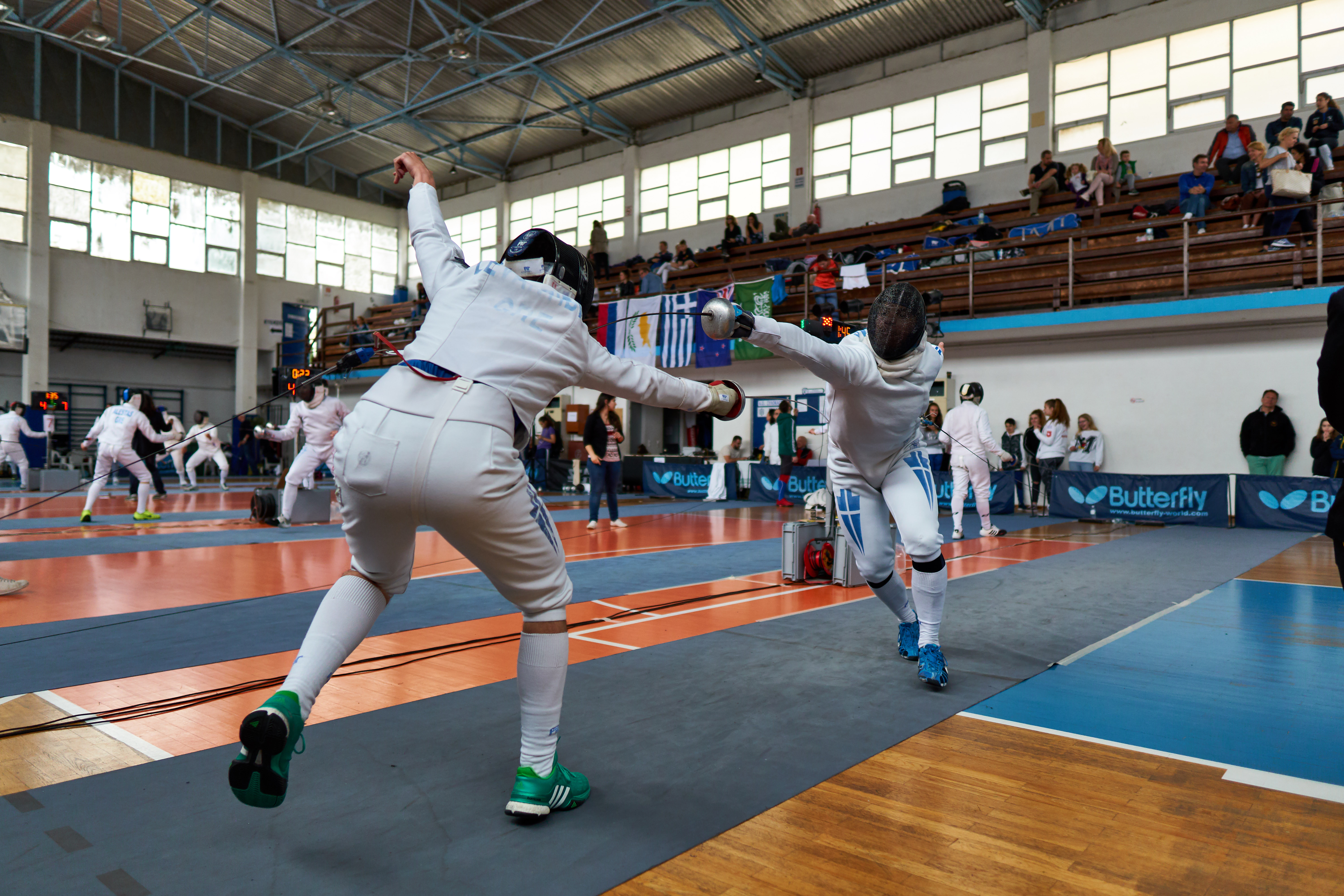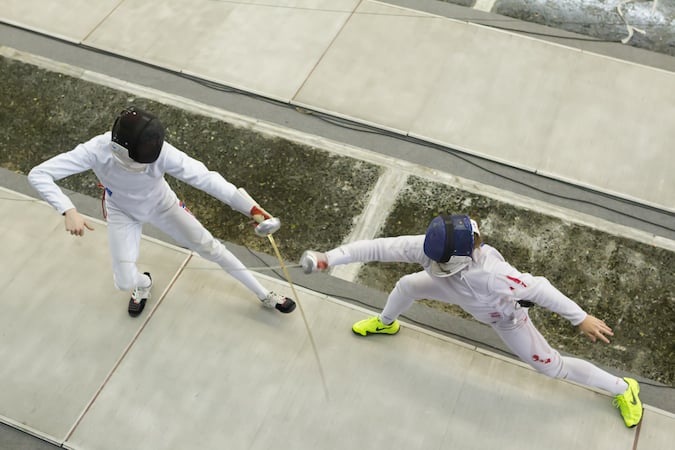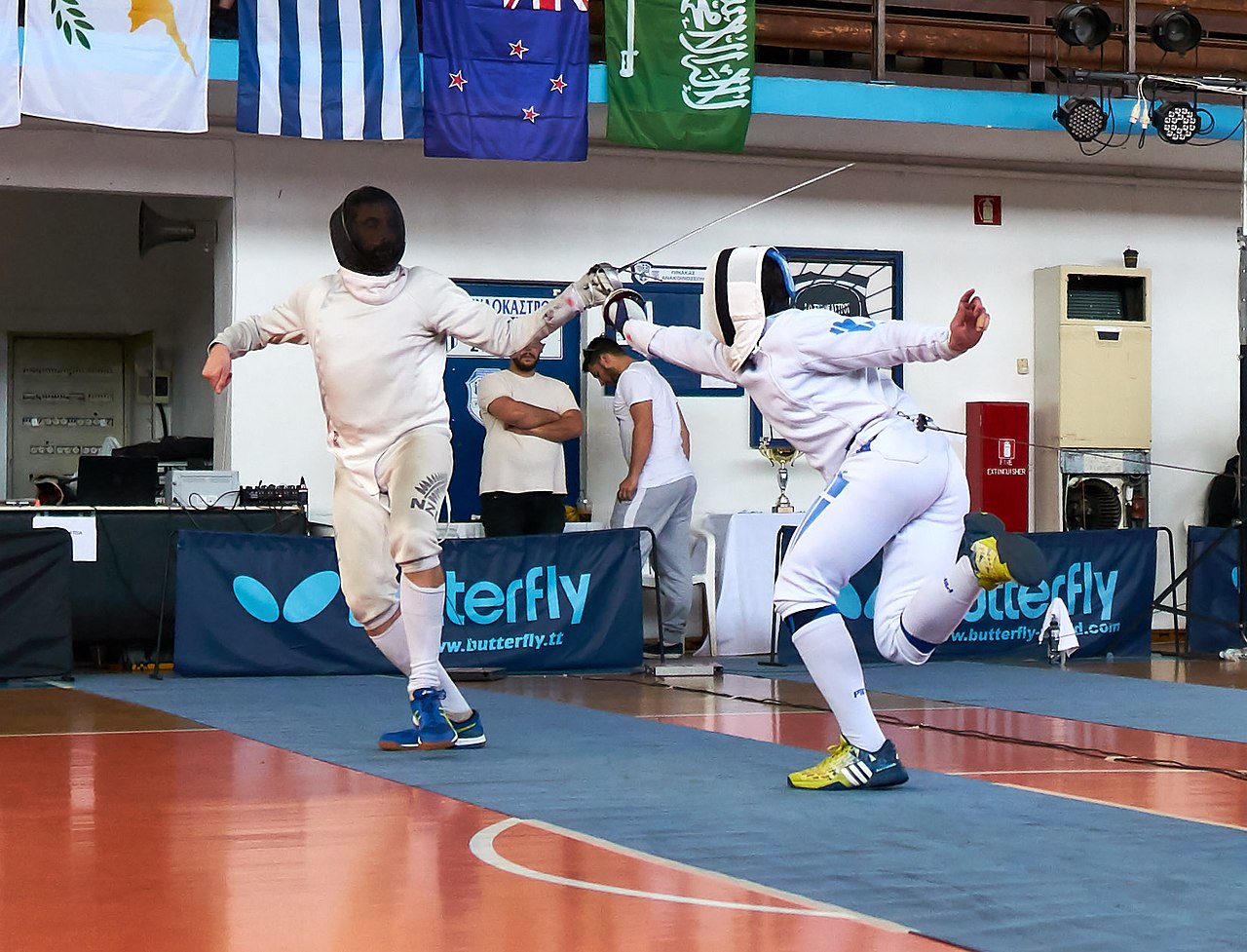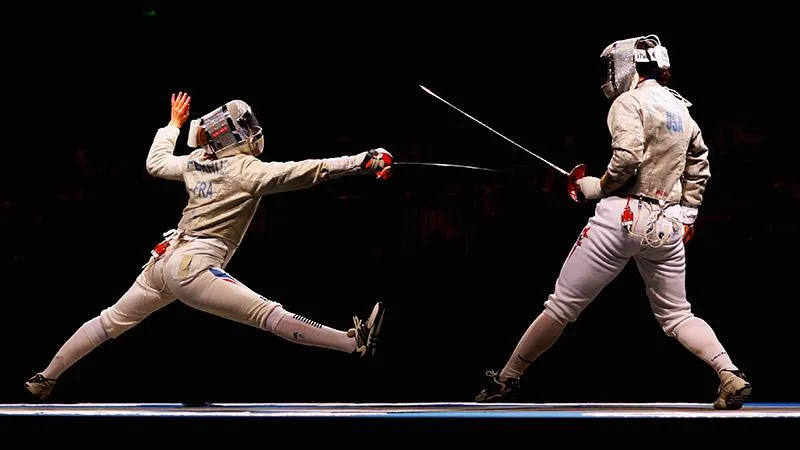Fleche fencing is a dynamic and exciting form of sword fighting that requires speed, agility, and precision. It is a technique that involves lunging forward in a swift motion to strike your opponent with your sword. This technique has been used in various forms of fencing for centuries and has evolved into a highly strategic and competitive sport. In this comprehensive guide, we will delve into the history, rules, techniques, training, and benefits of fleche fencing.
Introduction to Fleche Fencing

Fleche fencing, also known as “fleche attack” or “fleche thrust,” is a technique used in modern Olympic fencing. It is derived from the French word “fleche,” which means “arrow.” This technique involves a sudden and explosive movement where the fencer launches themselves towards their opponent in a straight line, extending their arm and sword to make a quick and powerful attack.
Fleche fencing is a high-risk, high-reward technique that requires excellent timing, coordination, and physical fitness. It is often used as a surprise attack to catch opponents off guard and score points quickly. However, it can also leave the fencer vulnerable if not executed correctly.
History of Fleche Fencing

The origins of fleche fencing can be traced back to the 16th century when it was used in duels and military combat. However, it wasn’t until the 19th century that it became a popular technique in competitive fencing. The Italian fencing master, Giuseppe Radaelli, is credited with developing the modern version of fleche fencing in the late 1800s.
In the early 20th century, fleche fencing gained widespread popularity in France, where it was used by the French army and adopted by the French school of fencing. It was also introduced to the Olympics in 1924 and has been a part of the Olympic fencing program ever since.
Over the years, fleche fencing has evolved and become more refined, with different schools of fencing incorporating their own variations and techniques. Today, it is an essential technique in modern foil and epee fencing and is used by top fencers around the world.
Rules and Regulations of Fleche Fencing

Like all forms of fencing, fleche fencing has specific rules and regulations that must be followed during competition. These rules are set by the International Fencing Federation (FIE) and may vary slightly between different fencing organizations.
Scoring
In fleche fencing, points are scored by making contact with the opponent’s valid target area, which is determined by the type of weapon being used. In foil fencing, only the torso is considered a valid target, while in epee fencing, the entire body is a valid target. The first fencer to score 15 points or have the highest score after three rounds wins the match.
Execution
To execute a successful fleche attack, the fencer must start from a stationary position with both feet on the ground. They then launch themselves forward in a straight line, extending their arm and sword towards the opponent’s valid target area. The attack must be completed within one second, and the fencer must maintain control of their weapon throughout the movement.
Safety Measures
As with all forms of fencing, safety is a top priority in fleche fencing. Fencers must wear protective gear, including a mask, jacket, glove, and plastron, to prevent injuries. The tip of the sword must also be covered with a rubber tip to minimize the risk of injury.
Equipment Needed for Fleche Fencing

To practice fleche fencing, you will need the following equipment:
- Fencing Mask: A protective mask that covers the face and head.
- Jacket: A padded jacket that covers the torso and arms.
- Glove: A glove that covers the hand and wrist.
- Plastron: A protective underarm jacket worn under the fencing jacket.
- Fencing Sword: A foil or epee sword, depending on the type of fleche fencing being practiced.
- Rubber Tip: A rubber tip that covers the end of the sword to prevent injuries.
- Fencing Shoes: Lightweight and flexible shoes with good traction for quick movements.
It is essential to invest in high-quality equipment to ensure safety and optimal performance while practicing fleche fencing.
Basic Techniques in Fleche Fencing
Fleche fencing may seem like a simple technique, but it requires precise execution and coordination between the fencer’s footwork, arm movement, and body positioning. Here are some basic techniques to keep in mind when practicing fleche fencing:
Footwork
Footwork is crucial in fleche fencing as it provides the necessary momentum and power for the attack. The fencer must start from a stationary position with both feet on the ground, then push off with their back foot while extending their front foot forward. This movement should be swift and explosive, propelling the fencer towards their opponent.
Arm Extension
The arm extension is another critical element in fleche fencing. As the fencer lunges forward, they must extend their arm and sword towards the opponent’s valid target area. The arm should remain straight and slightly above shoulder level to maintain control and accuracy.
Body Positioning
Proper body positioning is essential in fleche fencing to ensure balance and stability during the attack. The fencer’s upper body should lean slightly forward, with the back leg extended behind them for support. The front leg should be bent at the knee, with the toe pointing towards the opponent.
Advanced Strategies in Fleche Fencing
While the basic techniques of fleche fencing are essential, mastering advanced strategies can give you an edge over your opponents. Here are some advanced strategies to consider:
Timing and Distance
Timing and distance are crucial in fleche fencing, as a well-timed and executed attack can catch your opponent off guard and score points quickly. It is essential to practice and develop a sense of timing and distance to execute the fleche attack effectively.
Feinting
Feinting is a technique used to deceive your opponent and create an opening for a successful fleche attack. It involves making a fake attack or movement to draw your opponent’s attention away from their defense, allowing you to launch a surprise attack.
Combination Attacks
Combination attacks involve using multiple techniques in succession to confuse and overwhelm your opponent. In fleche fencing, combination attacks can be used to set up a successful fleche attack by creating openings and opportunities.
Training and Conditioning for Fleche Fencing
Fleche fencing requires a high level of physical fitness, agility, and coordination. To excel in this technique, fencers must undergo specific training and conditioning to improve their speed, strength, and endurance. Here are some training tips to help you master the art of fleche fencing:
Footwork Drills
Footwork drills are an essential part of fleche fencing training as they help improve speed, balance, and coordination. Some footwork drills that can benefit fleche fencers include lunges, jumps, and quick direction changes.
Strength and Conditioning
Strength and conditioning exercises are crucial for building the explosive power needed for a successful fleche attack. Exercises like squats, lunges, and plyometrics can help improve leg strength and explosiveness.
Cardiovascular Training
Cardiovascular training is essential for improving endurance and stamina, which are crucial for maintaining the intensity and speed required for fleche fencing. Activities like running, cycling, and interval training can help improve cardiovascular fitness.
Common Mistakes in Fleche Fencing
Fleche fencing may seem like a simple technique, but it requires precision and proper execution to be successful. Here are some common mistakes to avoid when practicing fleche fencing:
- Lack of Control: One of the most common mistakes in fleche fencing is losing control of the sword during the attack. This can result in a loss of points or even injuries.
- Poor Timing: Timing is crucial in fleche fencing, and mistiming your attack can leave you vulnerable to counterattacks from your opponent.
- Incorrect Footwork: Proper footwork is essential in fleche fencing, and any errors in foot placement or movement can affect the success of the attack.
- Inadequate Conditioning: Fleche fencing requires a high level of physical fitness, and inadequate conditioning can lead to fatigue and poor performance.
Famous Fleche Fencers
Over the years, many fencers have mastered the art of fleche fencing and become renowned for their skill and technique. Some famous fleche fencers include:
- Aldo Nadi: An Italian-American fencer who won two gold medals at the 1920 Olympics, known for his exceptional fleche attacks.
- Lucien Gaudin: A French fencer who won six Olympic medals, including three gold medals, known for his speed and agility in fleche fencing.
- Laura Flessel-Colovic: A French fencer who won five Olympic medals, including two gold medals, known for her precise and powerful fleche attacks.
Benefits of Practicing Fleche Fencing
Aside from being an exciting and competitive sport, fleche fencing offers numerous benefits for both physical and mental well-being. Here are some of the benefits of practicing fleche fencing:
- Improved Physical Fitness: Fleche fencing requires a high level of physical fitness, which can help improve strength, speed, agility, and endurance.
- Mental Focus and Discipline: Fleche fencing requires intense focus and discipline, which can help improve mental clarity and concentration.
- Stress Relief: Fencing is an excellent way to relieve stress and tension, as it allows you to release energy and focus on the present moment.
- Social Interaction: Fencing is a social sport that allows you to meet new people and build friendships with fellow fencers.
- Self-Defense: The skills learned in fleche fencing can also be applied in self-defense situations, making it a practical and useful skill to have.
Conclusion
Fleche fencing is a dynamic and challenging technique that requires precision, speed, and agility. It has a rich history and continues to evolve as a popular form of fencing in modern times. By understanding the rules, techniques, and strategies of fleche fencing and incorporating them into your training, you can master this art and become a skilled and successful fleche fencer. So grab your sword, put on your gear, and start practicing the fleche attack!